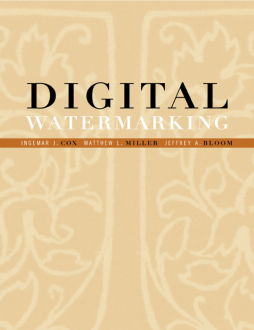
Additional Information
Book Details
Abstract
Digital watermarking is a key ingredient to copyright protection. It provides a solution to illegal copying of digital material and has many other useful applications such as broadcast monitoring and the recording of electronic transactions. Now, for the first time, there is a book that focuses exclusively on this exciting technology. Digital Watermarking covers the crucial research findings in the field: it explains the principles underlying digital watermarking technologies, describes the requirements that have given rise to them, and discusses the diverse ends to which these technologies are being applied. As a result, additional groundwork is laid for future developments in this field, helping the reader understand and anticipate new approaches and applications.
* Emphasizes the underlying watermarking principles that are relevant for all media: images, video, and audio.
* Discusses a wide variety of applications, theoretical principles, detection and embedding concepts and the key properties of digital watermarks--robustness, fidelity, data payload, and security
* Examines copyright protection and many other applications, including broadcast monitoring, transaction tracking, authentication, copy control, and device control.
* Presents a series of detailed examples called "Investigations" that illustrate key watermarking concepts and practices.
* Includes an appendix in the book and on the web containing the source code for the examples.
* Includes a comprehensive glossary of watermarking terminology
"This book is an immensely valuable contribution. The treatment of error rates, fidelity, quality and related issues is outstanding, being not just rooted in communications theory but also grounded in extensive experiments. Examples drawn from real systems are used to illustrate and motivate, while the inclusion of source code may enable future researchers in this field to start from a common place, and a higher level, than now. I expect that this book will become the standard reference work in the field." -- Ross Anderson, Cambridge University
